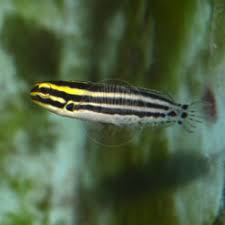The Dragon in Traditional Chinese Wedding Decorations: A Symbol of Power, Prosperity, and Harmony

The dragon, a powerful and mystical creature in Chinese culture, plays an important role in the rituals, symbols, and decorations surrounding Chinese weddings. With its rich historical and cultural significance, the dragon embodies qualities such as strength, longevity, protection, and prosperity, which are essential elements for a harmonious and prosperous marriage. The use of dragon motifs in wedding decorations reflects these deep meanings, emphasizing the wish for a joyful and successful life for the newlyweds.
In this article, we will explore how the dragon is incorporated into traditional Chinese wedding decorations, its symbolic meanings, and the ways it enhances the celebration of love, unity, and good fortune.
1. The Dragon and Its Symbolism in Chinese Culture
In Chinese mythology and culture, the dragon is considered a symbol of power, strength, and good fortune. It is a creature that represents the emperor and is associated with the cosmic elements—water, rain, and wind—powers vital to life and prosperity. Unlike the fearsome dragons found in Western mythology, the Chinese dragon is seen as a benevolent and protective figure, bringing good luck and happiness.
In a wedding context, the dragon is closely associated with the idea of harmony and balance. Along with the phoenix, which represents the bride, the dragon symbolizes the groom. The pairing of these two creatures reflects the union of two individuals, bringing together complementary forces—masculine and feminine energies—to create a harmonious and balanced relationship.
Furthermore, the dragon’s role in Chinese weddings is also tied to the idea of fertility and family. Dragons are believed to have the power to ward off evil spirits and bad luck, ensuring a happy and prosperous life for the newlyweds and their future children. This protective aspect of the dragon is particularly important in the Chinese wedding, where the focus is on creating a stable and joyful foundation for the couple’s life together.
2. The Dragon and the Phoenix: The Perfect Pairing
In Chinese wedding traditions, the dragon and the phoenix are often depicted together, forming a complementary and symbolic pair. While the dragon represents the groom, the phoenix represents the bride. This pairing of the two powerful creatures is symbolic of the balance and unity between husband and wife, as well as the harmony between the two families.
The dragon symbolizes the masculine qualities of power, authority, and ambition, while the phoenix embodies the feminine qualities of grace, beauty, and nurturing. Together, the dragon and phoenix represent the yin-yang philosophy of balance, showing how both partners are essential to each other’s growth and happiness.
This pairing is reflected in various wedding decorations, where the dragon and phoenix are often depicted together in intricate patterns and designs. Whether on the wedding attire, wedding invitations, or ceremonial objects, the image of the dragon and phoenix together creates a powerful and auspicious symbol of a blessed marriage.
3. Dragon Motifs in Wedding Decorations
a. Wedding Invitations
One of the earliest places where the dragon appears in a traditional Chinese wedding is in the wedding invitations. These invitations are often adorned with detailed and ornate dragon and phoenix motifs. The dragon is typically depicted as an elegant, serpentine figure, while the phoenix is shown in vibrant, flowing lines. Together, they serve as an invitation to celebrate the union of two people, emphasizing the auspiciousness of the event.
The dragon and phoenix on the wedding invitations not only serve as beautiful decorations but also convey the well-wishing message that the marriage will be prosperous and full of joy. In some cases, the wedding invitations feature red and gold colors, with the dragon and phoenix rendered in gold, symbolizing wealth, happiness, and good fortune.
b. Wedding Attire
In traditional Chinese weddings, the bride often wears a qipao or cheongsam, and the groom wears a traditional changshan or suit, with both outfits often embroidered with dragon motifs. For the bride, the phoenix is typically incorporated into the design, while the groom’s attire will feature a dragon. The dragon on the groom’s attire usually appears as an elegant embroidered figure, symbolizing his role as the head of the household and the protector of the family.
For the bride, the phoenix motif signifies beauty, grace, and fertility. The combination of the dragon and phoenix on the wedding attire highlights the theme of unity, signifying that the couple is embarking on their journey together as equals with complementary strengths. The presence of these symbols on the couple’s clothing reinforces the idea of the two coming together to form a balanced and prosperous marriage.
c. Wedding Ceremonial Objects
In addition to the attire, dragon motifs also appear on various ceremonial objects used during the wedding. For example, the wedding tea set, a traditional custom in Chinese weddings where the couple serves tea to their parents and elders, may feature dragon and phoenix designs. The teapot or tea cups may be adorned with intricate patterns of dragons and phoenixes, symbolizing respect for the couple’s families and the harmonious bond between them.
Dragon motifs can also be found on wedding cakes, especially in modern Chinese weddings, where elaborate cakes are often decorated with the symbols of the dragon and phoenix. These cakes are typically made in the shape of a dragon or phoenix or adorned with sculpted dragon figurines, which add a traditional touch to the modern celebration.
d. Wedding Banners and Decorations
Dragon imagery is also commonly used in wedding banners, lanterns, and decorations. These can be found throughout the wedding venue, creating an atmosphere of prosperity and good fortune. The decorations often feature gold, red, and other auspicious colors, with dragon motifs prominently displayed on wedding arches, walls, and hanging scrolls.
In some traditional Chinese weddings, dragon-shaped lanterns are used to illuminate the ceremony and reception areas. These lanterns are often designed in such a way that they appear as if the dragon is in motion, symbolizing the couple’s dynamic relationship and their journey forward as a unified force. These lanterns not only provide lighting but also contribute to the creation of a festive and joyful atmosphere, in line with the wedding’s theme of celebration and happiness.
e. Wedding Red Envelopes (Hongbao)
Another significant item in a Chinese wedding is the hongbao—a red envelope containing money that is given to the couple as a gesture of blessing. While the dragon may not always be directly featured on the envelope itself, it is common for dragon motifs to appear on the packaging or the decorative elements surrounding the hongbao. The dragon’s presence on the hongbao signifies the wishes for prosperity and good fortune for the couple as they embark on their new life together.
f. Wedding Car Decorations
In some traditional Chinese weddings, the couple’s car is also decorated with dragon and phoenix motifs. The use of these symbols on the wedding car highlights the auspicious nature of the event and reinforces the idea that the newlyweds are embarking on a blessed journey together. Whether through colorful ribbons, embroidered fabrics, or paper cutouts, the dragon and phoenix serve as reminders of the union of the couple and the blessings they have received.
4. The Dragon’s Role in Wedding Rituals
In addition to its appearance in wedding decorations, the dragon plays a key role in certain wedding rituals and customs. One of the most important customs is the dragon-and-phoenix cake cutting ritual, where the bride and groom cut a specially prepared cake decorated with dragon and phoenix symbols. This ritual symbolizes the couple’s union and marks the beginning of their life together as husband and wife.
The dragon also plays a role in the wedding procession, where it is often represented by a dragon-shaped figure or dragon dance that accompanies the bride and groom as they move through the streets. The dragon dance is believed to bring good luck, scare away evil spirits, and ensure that the marriage will be prosperous and free from misfortune.
In some regions, the dragon’s dance is an essential part of the wedding celebration. It is performed by a group of dancers dressed in dragon costumes, symbolizing the strength, fertility, and protection that the couple will receive throughout their marriage. This vibrant and energetic performance reinforces the idea that the couple’s union is both joyous and blessed by divine forces.
5. Conclusion: The Dragon’s Enduring Significance in Chinese Weddings
The dragon remains an enduring and powerful symbol in traditional Chinese weddings, representing strength, prosperity, protection, and balance. Through its presence in wedding decorations, rituals, and customs, the dragon plays a central role in ensuring that the marriage is prosperous, harmonious, and blessed by good fortune.
From intricate dragon-embroidered wedding attire to elaborate dragon-themed ceremonial objects, the dragon’s presence in Chinese wedding traditions is a reflection of the deep cultural values that emphasize the importance of love, family, and unity. As a symbol of divine power and celestial protection, the dragon continues to play an essential role in shaping the rich cultural tapestry of Chinese weddings, ensuring that each couple’s journey together is filled with strength, happiness, and prosperity.

